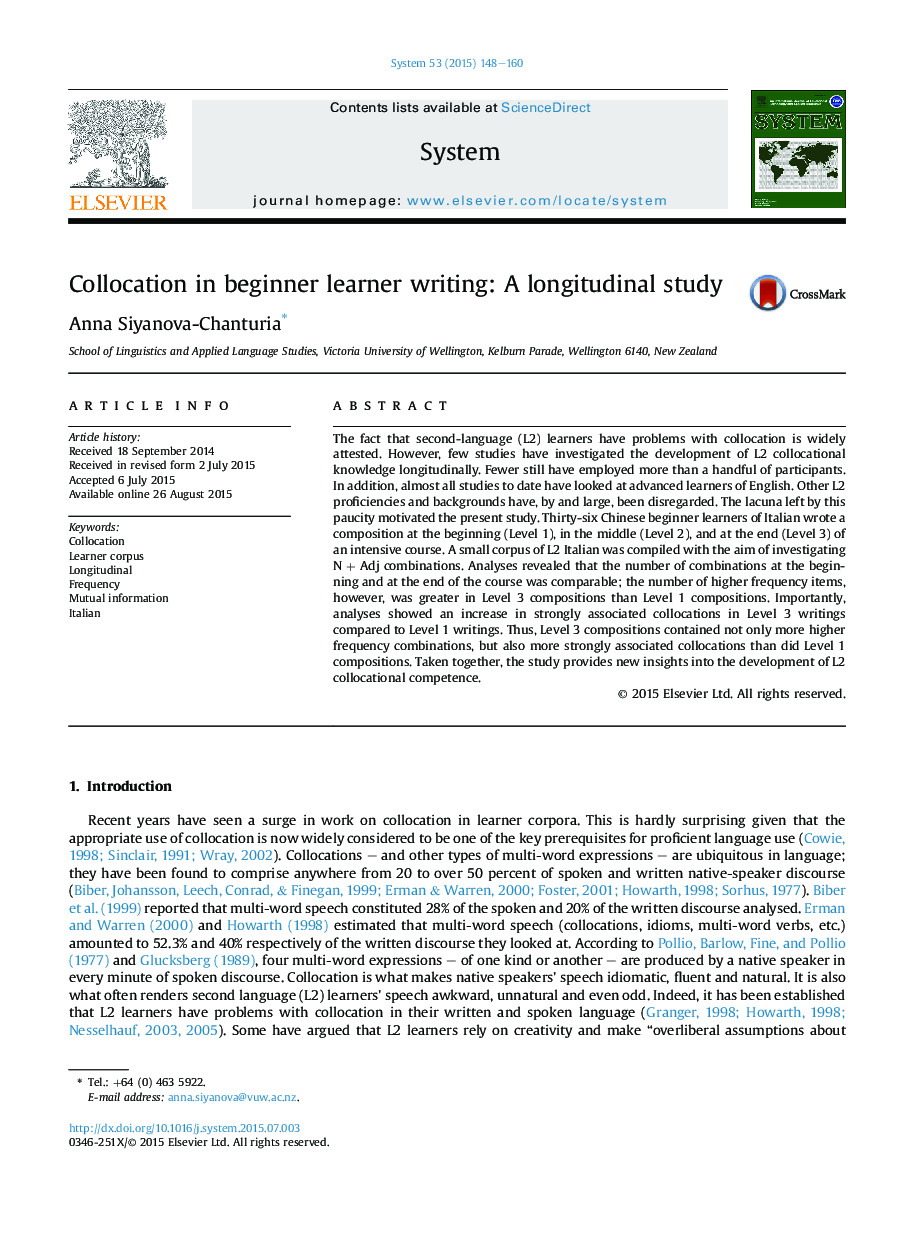| Article ID | Journal | Published Year | Pages | File Type |
|---|---|---|---|---|
| 373018 | System | 2015 | 13 Pages |
The fact that second-language (L2) learners have problems with collocation is widely attested. However, few studies have investigated the development of L2 collocational knowledge longitudinally. Fewer still have employed more than a handful of participants. In addition, almost all studies to date have looked at advanced learners of English. Other L2 proficiencies and backgrounds have, by and large, been disregarded. The lacuna left by this paucity motivated the present study. Thirty-six Chinese beginner learners of Italian wrote a composition at the beginning (Level 1), in the middle (Level 2), and at the end (Level 3) of an intensive course. A small corpus of L2 Italian was compiled with the aim of investigating N + Adj combinations. Analyses revealed that the number of combinations at the beginning and at the end of the course was comparable; the number of higher frequency items, however, was greater in Level 3 compositions than Level 1 compositions. Importantly, analyses showed an increase in strongly associated collocations in Level 3 writings compared to Level 1 writings. Thus, Level 3 compositions contained not only more higher frequency combinations, but also more strongly associated collocations than did Level 1 compositions. Taken together, the study provides new insights into the development of L2 collocational competence.
